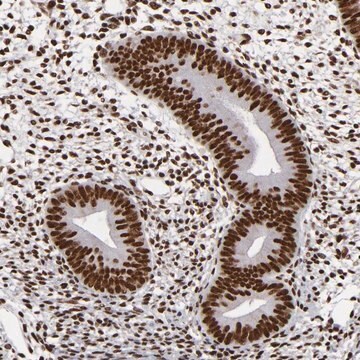F0382
Anti-Rabbit IgG (whole molecule)–FITC antibody produced in goat
affinity isolated antibody, buffered aqueous solution
Synonym(s):
Goat Anti-Rabbit IgG (whole molecule)–Fluorescein isothiocyanate
Sign Into View Organizational & Contract Pricing
All Photos(1)
About This Item
Recommended Products
biological source
goat
Quality Level
conjugate
FITC conjugate
antibody form
affinity isolated antibody
antibody product type
secondary antibodies
clone
polyclonal
form
buffered aqueous solution
technique(s)
indirect immunofluorescence: 1:80
storage temp.
2-8°C
target post-translational modification
unmodified
Looking for similar products? Visit Product Comparison Guide
General description
IgGs are glycoprotein antibodies that modulate several immune responses. Rabbit IgGs against target proteins are often used as primary antibodies in various research applications. Thus, secondary anti-rabbit IgGs conjugated to a detectable substrate are useful tools for the analysis of target proteins. Anti-Rabbit IgG (whole molecule)-FITC antibody reacts with rabbit serum and rabbit IgG.
Specificity
Binds all rabbit Igs.
Immunogen
Purified rabbit IgG
Application
Anti-Rabbit IgG (whole molecule)-FITC antibody is suitable for use in immunofluorescence .
Physical form
Solution in 0.01 M phosphate buffered saline, pH 7.4, containing 1% bovine serum albumin and 15 mM sodium azide
Disclaimer
Unless otherwise stated in our catalog or other company documentation accompanying the product(s), our products are intended for research use only and are not to be used for any other purpose, which includes but is not limited to, unauthorized commercial uses, in vitro diagnostic uses, ex vivo or in vivo therapeutic uses or any type of consumption or application to humans or animals.
Not finding the right product?
Try our Product Selector Tool.
Storage Class Code
10 - Combustible liquids
WGK
nwg
Flash Point(F)
Not applicable
Flash Point(C)
Not applicable
Choose from one of the most recent versions:
Already Own This Product?
Find documentation for the products that you have recently purchased in the Document Library.
Customers Also Viewed
X Ge et al.
Journal of animal science, 90(4), 1126-1133 (2011-11-22)
Growth hormone is a major stimulator of skeletal muscle growth in animals, including cattle. In this study, we determined whether GH stimulates skeletal muscle growth in cattle by direct stimulation of proliferation or fusion of myoblasts, by direct stimulation of
Kenneth W Simpson et al.
Infection and immunity, 74(8), 4778-4792 (2006-07-25)
The mucosa-associated microflora is increasingly considered to play a pivotal role in the pathogenesis of inflammatory bowel disease. This study explored the possibility that an abnormal mucosal flora is involved in the etiopathogenesis of granulomatous colitis of Boxer dogs (GCB).
Claire Joly Condette et al.
PloS one, 9(7), e102217-e102217 (2014-07-16)
The epithelium's barrier function is crucial for maintaining homeostasis and preventing the passage of food antigens and luminal bacteria. This function is essentially subserved by tight junctions (TJs), multiprotein complexes located in the most apical part of the lateral membrane.
J Enrique Salcedo-Sora et al.
The Journal of biological chemistry, 286(52), 44659-44668 (2011-10-15)
Tetrahydrofolates are essential cofactors for DNA synthesis and methionine metabolism. Malaria parasites are capable both of synthesizing tetrahydrofolates and precursors de novo and of salvaging them from the environment. The biosynthetic route has been studied in some detail over decades
M A Sussman et al.
The Journal of clinical investigation, 101(1), 51-61 (1998-02-14)
Loss of myofibril organization is a common feature of chronic dilated and progressive cardiomyopathy. To study how the heart compensates for myofibril degeneration, transgenic mice were created that undergo progressive loss of myofibrils after birth. Myofibril degeneration was induced by
Our team of scientists has experience in all areas of research including Life Science, Material Science, Chemical Synthesis, Chromatography, Analytical and many others.
Contact Technical Service












